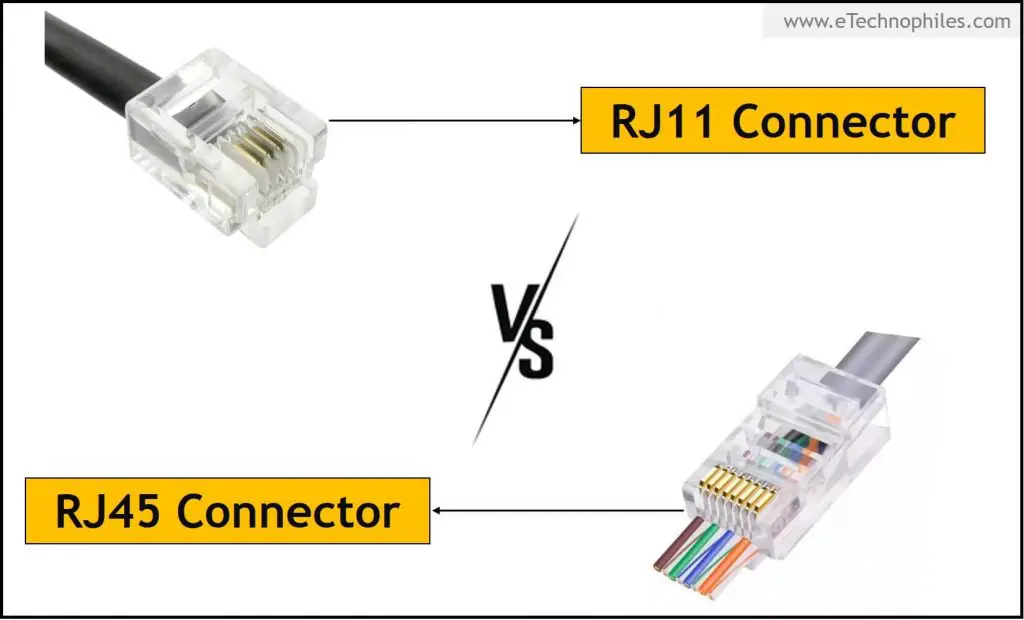RJ45 VS RJ11
RJ45 VS RJ11
RJ45 and RJ11 are both types of connectors used in networking, but they serve different purposes and are easily distinguishable. RJ45 and RJ11 connectors look similar, but they have key differences, especially in terms of size and application.
RJ45 connectors are larger and have eight pins. They are commonly used in Ethernet networking for connecting computers, routers, and other devices to a local area network (LAN). The RJ45 connector is crucial for transmitting data at high speeds, making it the standard connector for wired internet connections. The eight-pin configuration supports the four pairs of twisted cables required for Ethernet connections.
On the other hand, RJ11 connectors are smaller and have six pins. They are typically used for telephone connections, carrying voice signals over a landline. RJ11 cables are commonly found in homes and offices for connecting telephones, fax machines, or modems to a telephone line.
In summary, the main difference lies in their application: RJ45 is used for Ethernet networking, supporting high-speed data transfer, while RJ11 is used for telephone connections, handling voice signals over a landline. It's crucial to use the right connector for the intended purpose to ensure proper functionality in networking or telecommunications setups.
RJ45:
1. Size:
RJ45 connectors are larger compared to RJ11 connectors.
2. Number of Pins:
RJ45 connectors have eight pins arranged in two rows of four.
3. Application:
Primarily used in Ethernet networking for high-speed data transmission.
4. Network Devices:
Commonly used to connect computers, routers, switches, and other devices to a local area network (LAN).
5. Data Transmission:
Supports high-speed data transmission for internet connectivity.
6. Cable Type:
Utilizes twisted pair cables (Cat5e, Cat6, etc.) to transmit data efficiently.
7. Ethernet Standard:
Complies with Ethernet standards for networking.
8. Usage:
Mainly used in modern networking setups for internet connectivity.
9. Color Coding:
Often follows a specific color-coding standard for proper cable termination.
10. Modularity:
RJ45 connectors are modular, allowing for easy replacement and reconfiguration.
11. Pin Configuration:
Requires all eight pins for proper functionality.
12. Wiring Standards:
Follows TIA/EIA-568 wiring standards for Ethernet connections.
13. Data Speeds:
Supports various data speeds, including Gigabit and 10 Gigabit Ethernet.
14. Twisted Pairs:
Requires four twisted pairs of cables for effective data transmission.
15. Typical Cable Category:
Commonly associated with Cat5e, Cat6, or higher cable categories.
RJ11:
1. Size:
RJ11 connectors are smaller compared to RJ45 connectors.
2. Number of Pins:
RJ11 connectors have six pins arranged in two or four conductors.
3. Application:
Primarily used in telephone and voice applications.
4. Network Devices:
Commonly used to connect telephones, fax machines, and modems to a telephone line.
5. Data Transmission:
Primarily designed for voice transmission, not suitable for high-speed data like Ethernet.
Understanding these differences is crucial for correctly selecting and using the appropriate connector for the intended purpose in networking or telecommunications installations.


Comments
Post a Comment